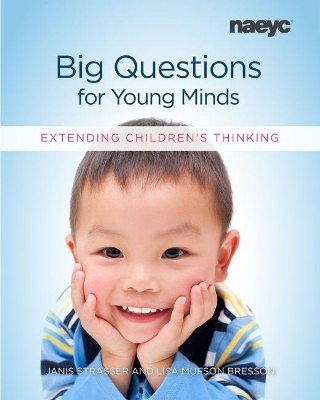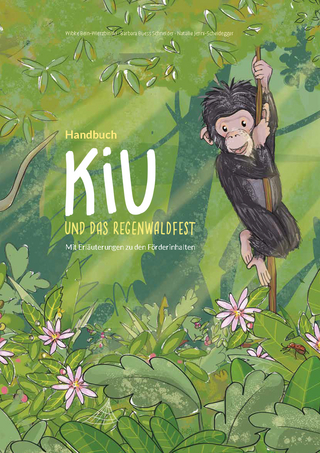
Big Questions for Young Minds
National Association for the Education of Young Children (Verlag)
978-1-938113-30-7 (ISBN)
Questions are powerful tools, especially in the classroom. Asking rich, thoughtful questions can spark young children’s natural curiosity and illuminate a whole new world of possibility and insight. But what are “big” questions, and how do they encourage children to think deeply? With this intentional approach—rooted in Bloom’s Taxonomy—teachers working with children ages 3 through 6 will discover how to meet children at their individual developmental levels and stretch their thinking. Featuring contributions from respected names in the field, this book
Offers a foundation for using high-level questions in preschool and kindergarten interest areas
Provides tips for getting started and examples of questions at each of the six levels of questioning
Explores the use of high-level questions during daily classroom routines and in a variety of contexts
Recommends picture books that support the use of high-level questions
Includes an extensive resource section for teachers and families
With the guidance in this book as a cornerstone in your day-to-day teaching practices, learn how to be more intentional in your teaching, scaffold children’s learning, and promote deeper understanding.
Janis Strasser, EdD, is a teacher educatorand coordinator of the MEd in Curriculum and Learning Early Childhood concentration at William Paterson University in Wayne, New Jersey. She has worked in the field of early childhood for more than 40 years. Lisa Mufson Bresson, MEd, is a technical assistance supervisor for Grow NJ Kids, New Jersey’s statewide Quality Rating Improvement System for early childhood programs. She previously taught in urban public preschool settings for 13 years.
Introduction
Part 1: Using Questions in Classroom Interest Areas
Chapter 1: Dramatic Play Area
Chapter 2 : Block Area
Chapter 3: Mathematics/Manipulatives Area.
Chapter 4: A Makerspace in the Science Area
Chapter 5: Writing Area
Chapter 6: Art Area
Part 2: Using Questions During Other Parts of the Daily Routine
Chapter 7: Class Meetings
Chapter 8: Read-Alouds
Chapter 9: Exploring and Making Music
Chapter 10: Large Motor Activities
Chapter 11: Outdoors
Chapter 12: Mealtimes
Part 3: More Learning Opportunities with Questions
Chapter 13: Supporting Emotional Development During the First Months of School
Chapter 14: Kickstarting the School Year: Exploring Change Through Long-Term Studies
Chapter 15: Using Featured Materials
Chapter 16: Multiday Explorations
Chapter 17: Supporting Children’s Understanding About Diversity
Chapter 18: Making the Most of Classroom Displays
Chapter 19: Documenting Children’s Learning
Part 4: Resources
References
Acknowledgments
About the Authors About the Contributors
| Erscheinungsdatum | 05.11.2017 |
|---|---|
| Zusatzinfo | Illustrations |
| Verlagsort | Washington DC |
| Sprache | englisch |
| Maße | 203 x 254 mm |
| Themenwelt | Sozialwissenschaften ► Pädagogik ► Vorschulpädagogik |
| ISBN-10 | 1-938113-30-6 / 1938113306 |
| ISBN-13 | 978-1-938113-30-7 / 9781938113307 |
| Zustand | Neuware |
| Haben Sie eine Frage zum Produkt? |
aus dem Bereich


